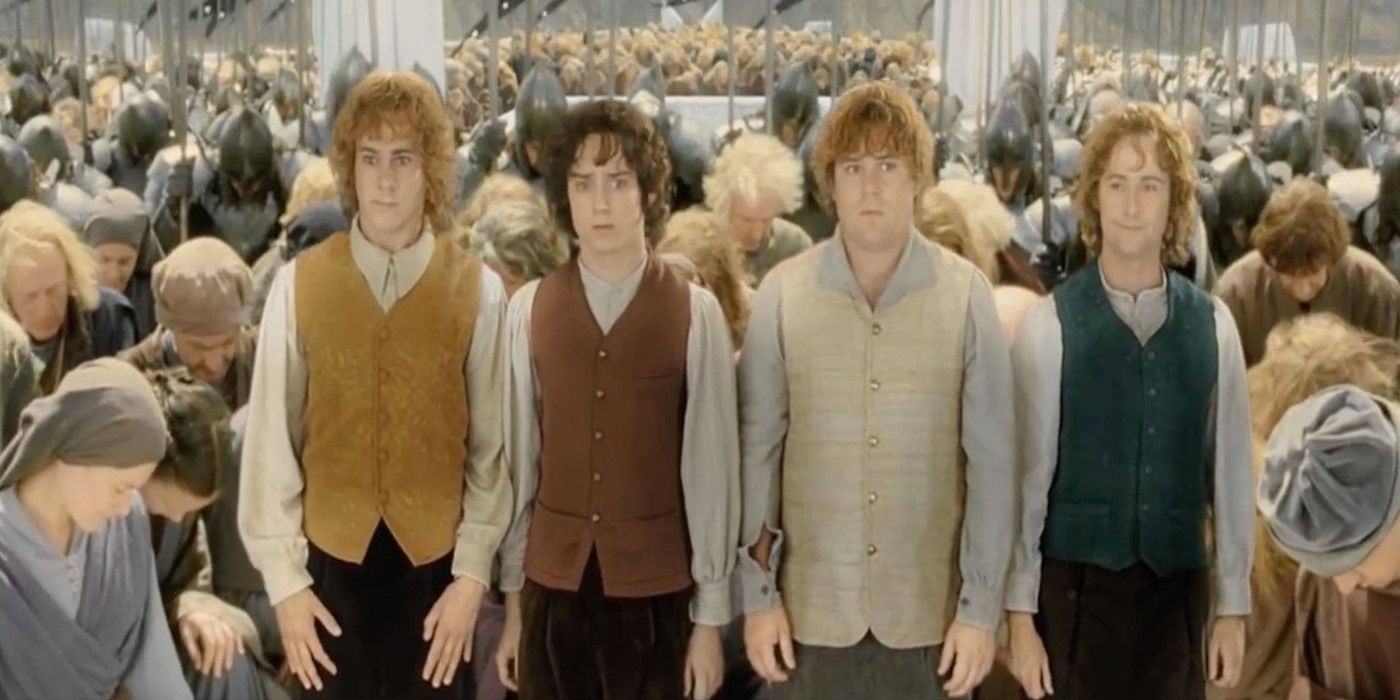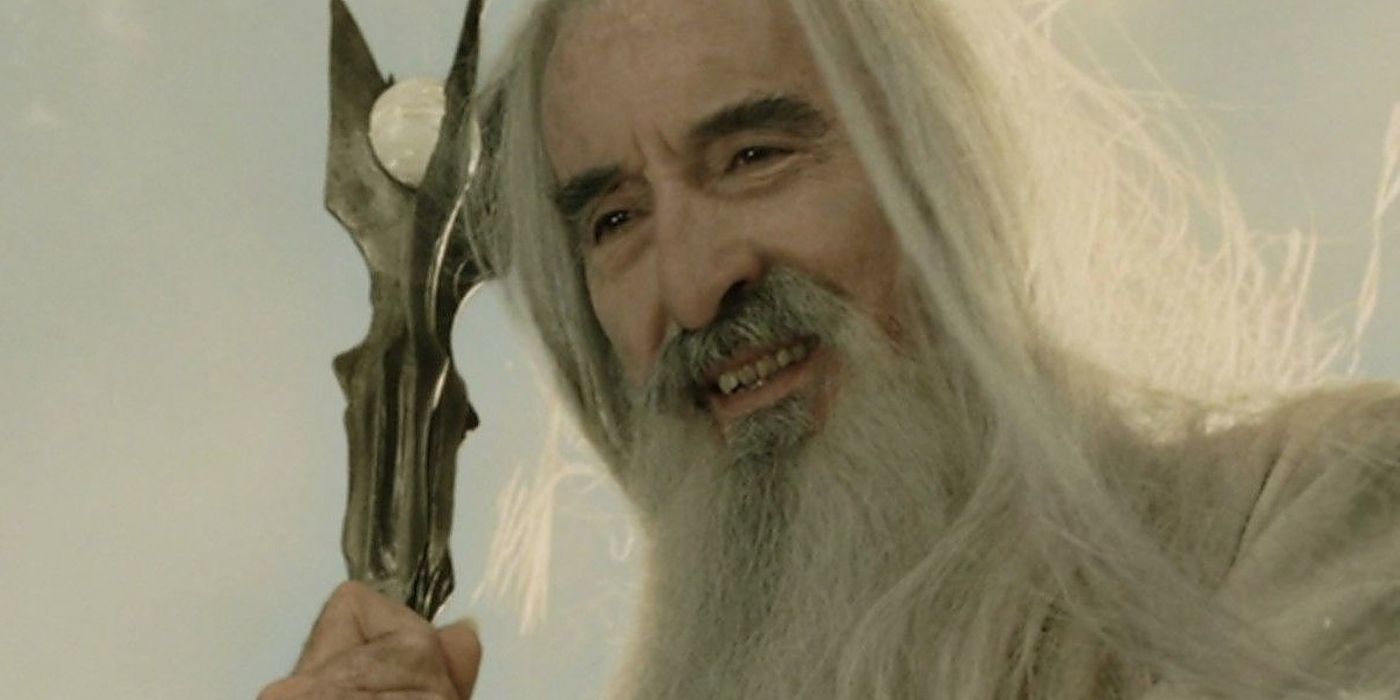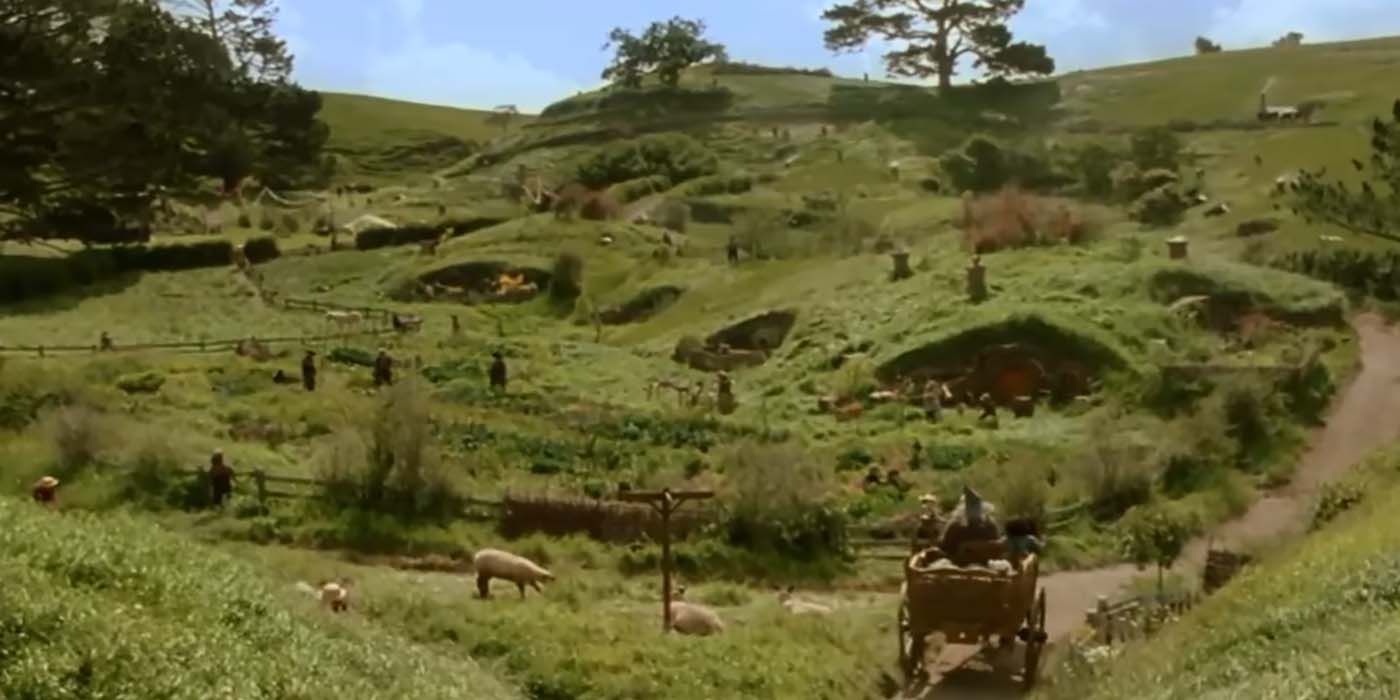Any work of fiction is only as good as its ending, and Peter Jackson's adaptation of J. R. R. Tolkien's The Lord of the Rings certainly has a great one. It neatly ties up all the loose ends, provides closure and gives most characters a happy ending. Unfortunately, that is specific to Peter Jackson's interpretation. In the books, Tolkien's ending is entirely different. While it doesn't change up the overall story, it provides a much-needed space for the new and improved Hobbits to test out their skills against a foe they thought previously dead -- Saruman.
At the beginning of The Return of the King film, Saruman is pushed off of the tower at Orthanc by Gríma Wormtongue and is impaled by the water wheel, killing him instantly. In the books, Saruman is not killed after the fall of Isengard. The Ents trap Saruman in the tower as his base of operations is destroyed. When Gandalf and company arrive at the scene, Gandalf expels Saruman from the Istari (the magical wizards placed on Middle-earth to keep order and peace) and breaks his powerful staff.
After his fall from power, Saruman makes his way to the Shire to meet up with his distant co-conspirator Lotho Sackville-Baggins, who had since brought the Shire under his control. Lotho traded pipe-weed for Saruman's money and used it to buy up land in the Southfarthing where Saruman's men were stationed. With their support, Lotho supplanted the real mayor and took power for himself. So when Saruman decided to seek sanctuary there, he was readily accepted.
When Frodo, Sam, Merry and Pippin return to the Shire after Aragon is crowned and the War of the Ring is finally over, they arrive at a frightful version of the home they knew. Once lush and green, the Shire's become a desolate, industrial wasteland. They hear about a criminal master named Sharkey and plan an attack. After the Battle of Bywater, a battle entirely left out of Peter Jackson's films, Saruman is finally killed by a resentful and bitter Gríma Wormtongue on the doorstep of Bag End.
It's easy to understand why The Lord of the Rings' adaptations leave this ending out -- just when the Hobbits reach what they think is the end of their journey, they are faced with a fight for their home, with no help from Men, Elves or Dwarves. While the films provide a neat, bow-tie ending and give a definite sense of closure, it leaves out the epitome of the Hobbit's fortitude. After all that they had been through, the fight for the Shire is the most important fight for them yet. It shows how much each of them had grown in their respective journeys and put their experience to the test.
After the Hobbits settle the Shire, the plot plays out similarly to The Lord of the Rings films. Frodo makes his way to the Grey Havens, where he meets Bilbo, Gandalf, Galadriel and Celeborn. Together, they leave Middle-earth forever, with the War of the Ring finally over and peace restored to the land. The only thematic difference in Tolkien's ending is that it solidified the end of Middle-earth's innocence. The Shire had been the Hobbits' beacon of hope, reminding them what they were fighting for. But when they returned, it was as corrupt as Isengard.
Both endings of The Lord of the Rings are satisfying. While Tolkien's conclusion provides a more thematic element, Peter Jackson's neatly ties up the massive film trilogy that swept the nation by storm. Jackson's adaptation might be different, but it doesn't lose any of its potency.



